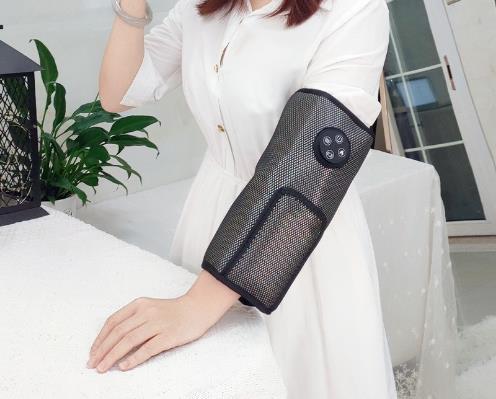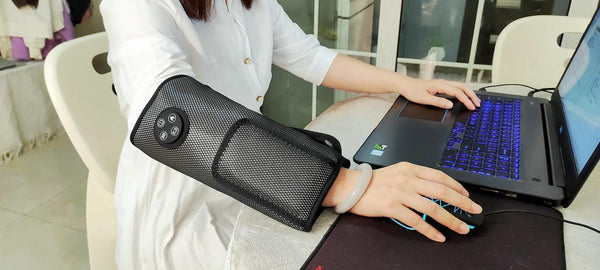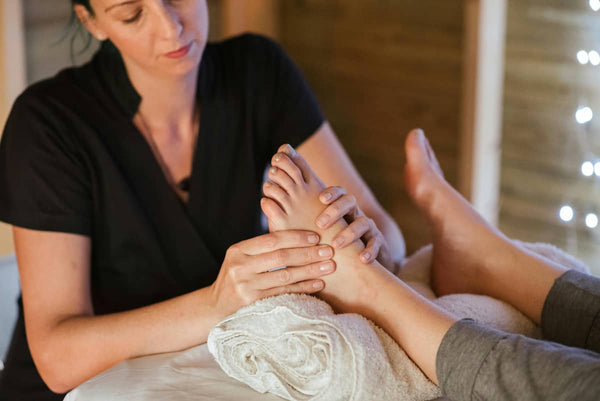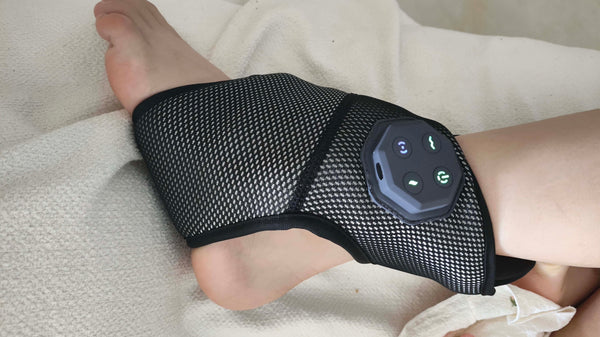 Walk into any store or browse online, and you're bombarded with choices for massage equipment. From simple foam cylinders to futuristic-looking percussion guns, the market for at-home recovery tools is vast and, frankly, confusing. A common question I hear is whether splashing out on high-tech, expensive gadgets is really necessary, or if the classic, cheaper tools do the job just fine. This is a really, really important question for anyone trying to manage daily aches with home massage equipment without breaking the bank.
Walk into any store or browse online, and you're bombarded with choices for massage equipment. From simple foam cylinders to futuristic-looking percussion guns, the market for at-home recovery tools is vast and, frankly, confusing. A common question I hear is whether splashing out on high-tech, expensive gadgets is really necessary, or if the classic, cheaper tools do the job just fine. This is a really, really important question for anyone trying to manage daily aches with home massage equipment without breaking the bank.
The truth is, the "best" piece of massage equipment isn't about the price tag; it's about matching the tool to your specific needs, lifestyle, and physical capabilities. In this guide, we'll cut through the marketing hype and take a rational look at the different types of massage equipment and massage products available. We will break down the real-world value, the pros, and the cons of popular massage equipment, especially for office workers dealing with neck and back strain, and for middle-aged and elderly individuals seeking safe, effective relief.
The Aches of Modern Life: Why We Seek Relief
Have you ever finished a long day at your desk and felt that familiar, nagging tightness in your neck and shoulders? Or perhaps as you've gotten older, a general stiffness seems to have settled into your back and hips. You're not alone. These discomforts are often the result of our modern lifestyles, making effective massage equipment a popular solution. For office workers, hours spent hunched over a keyboard lead to shortened pectoral muscles and overstretched, weakened back muscles, creating postural imbalances and persistent pain.
For middle-aged and elderly individuals, the reasons can be a combination of reduced activity, age-related changes in muscle and connective tissue, and the cumulative effect of minor strains over the years. These issues manifest as "knots" or trigger points—tiny contractions in the muscle fibers that can be painful and restrict movement. This is precisely why finding effective, easy-to-use massage equipment has become a priority for so many, as it offers a way to manage these symptoms from the comfort of home.
How Massage Tools Work: The Science of Myofascial Release
So, what's actually happening when you use a piece of massage equipment? Most of these tools work on a principle called myofascial release. Imagine your muscles are wrapped in a thin, strong web of connective tissue called fascia. When you're stressed, injured, or inactive, this fascia can become tight and form adhesions, restricting movement and causing pain. The goal of any good massage equipment is to break up these adhesions. This is the core principle behind most at-home massage products.
By applying sustained or percussive pressure to these tight spots with your chosen massage equipment, you're essentially doing two things. First, you're stimulating specialized nerve receptors (mechanoreceptors) in the muscle, which signals the brain to relax the muscle tension. Second, you're physically encouraging blood flow to the area, which delivers oxygen and nutrients that help the tissue heal and flush out metabolic waste. This combination of neurological relaxation and improved circulation is what makes the right massage equipment so effective.
A Critical Look at Common Massage Tools: Pros, Cons & Controversies
Navigating the options for massage equipment requires an honest look at what each category offers. Let's evaluate the most common types of massage products based on their practicality for home use, especially for non-athletes who need reliable and safe tools.
The Foundation: Foam Rollers & Manual Tools
These basic types of massage equipment, like foam rollers, lacrosse balls, and handheld massage sticks, are the undisputed entry point into self-myofascial release. Their biggest advantage is cost and simplicity. However, their effectiveness is limited. While great for large muscle groups, they often fail to provide the targeted, deep pressure needed for stubborn knots. Furthermore, this category of massage equipment requires significant physical effort and mobility—a serious challenge for many older adults or those with limited flexibility.
The Power Players: Are Percussion Guns Overkill?
This powerful category of massage equipment, known as massage guns or batting guns, has exploded in popularity. They can be incredibly effective at breaking up deep knots. However, with great power comes great responsibility—and risk. For the average user, especially the elderly, the intense force can easily cause injury if used incorrectly. To be honest, they are a specialized piece of massage equipment, and for many, their high cost and potential for harm make them an unfriendly choice for general home use.
The 'Upgraded' Basics: Are Vibration Rollers Worth the Hype?
Then there is a niche type of massage equipment, such as vibrating foam rollers, which promise to combine the benefits of rolling with vibration therapy. While there is some evidence that vibration can help with pain modulation, the controversy lies in their cost-to-benefit ratio. These devices are often several times more expensive than their non-vibrating counterparts, making them a type of massage supplies where the added value is minimal for the significant price increase for most users.
The All-in-One Contender: The Rise of Portable Multi-Function Massagers
A more suitable middle ground of massage equipment for home use is emerging in the form of portable, multi-functional massagers. Devices like the KLCOSY massager represent a category of apparatus massage designed specifically for convenience and safety. Their key advantages lie in their user-centric design: they are portable, feature adjustable intensity, and come with multiple attachments. This multi-use approach means one device can safely address multiple body parts, representing a smart investment in home wellness massage supplies.
Choosing Wisely: Tips for Selecting the Right Massage Apparatus for You
 Finding the right massage equipment doesn't have to be a gamble. Instead of getting swayed by trends, take a step back and assess your personal needs. This rational approach will ensure you invest in a piece of massage equipment you'll actually use and benefit from. A little bit of forethought here saves a lot of money and disappointment later.
Finding the right massage equipment doesn't have to be a gamble. Instead of getting swayed by trends, take a step back and assess your personal needs. This rational approach will ensure you invest in a piece of massage equipment you'll actually use and benefit from. A little bit of forethought here saves a lot of money and disappointment later.
Here are some key factors to consider before you buy any new massage equipment:
- Assess Your Primary Complaint: Are you dealing with broad muscle soreness or a specific knot? A roller is fine for general soreness, but a more targeted piece of massage equipment is better for trigger points.
- Consider Your Physical Ability: Be honest about your mobility. If getting on the floor is a struggle, floor-based massage equipment is not a practical choice. Look for handheld devices.
- This is non-negotiable, especially for older adults. Opt for devices with adjustable settings. This is a crucial consideration when selecting any
- . Always avoid applying deep pressure directly on the spine, joints, or major arteries.
- Evaluate Value Over Price: A $20 foam roller you never use is more expensive than a $150 versatile piece of massage equipment you use daily. Think about cost-per-use and whether one device can replace the need for several other massage supplies.
- Look for Versatility and Ease of Use: The best tool is the one you can easily use without a complicated setup. A single apparatus massage device with interchangeable heads offers far greater utility and convenience for home use.
Ultimately, the most expensive or powerful piece of massage equipment is not automatically the best. For office workers and middle-aged or elderly individuals, the wisest investment is often not the most basic or the most aggressive massage equipment. Instead, value lies in safety, adjustability, and versatility. A portable, multi-functional massager that allows you to control the intensity and target different areas of the body comfortably is often the most practical and cost-effective piece of massage equipment for long-term pain management and daily relief.
Frequently Asked Questions
What massage equipment is essential for a home spa?
For a truly essential home spa setup, you don't need a huge collection of massage equipment. Start with a high-quality, versatile handheld massager with adjustable intensity. Complement this with simple massage products like a lacrosse ball for pinpoint work and Epsom salts for a relaxing bath. This combination covers most bases without cluttering your home or budget.
Where to buy high-quality massage equipment in Australia?
In Australia, you have several great options for purchasing high-quality massage equipment australia. Reputable online retailers or specialized wellness e-commerce sites often carry a curated selection of trusted brands and massage products. For those who prefer to see and feel the products, major department stores are an option. Additionally, consider looking at stores that supply physiotherapy and chiropractic clinics, as they typically stock professional-grade, durable massage supplies. Searching for "massage supplies near me" on a map can also reveal local specialty health stores.
Is massage equipment worth the investment for pain management?
Absolutely. For many people, investing in the right piece of home massage equipment is one of the most cost-effective strategies for long-term pain management. Think about the cumulative cost of professional massages or physiotherapy. A one-time purchase of a quality piece of massage equipment that you can use daily to manage stiffness and alleviate chronic pain offers incredible value. The key is choosing the right massage equipment that you will use consistently and safely, turning it into a valuable part of your daily wellness routine.




0 comments